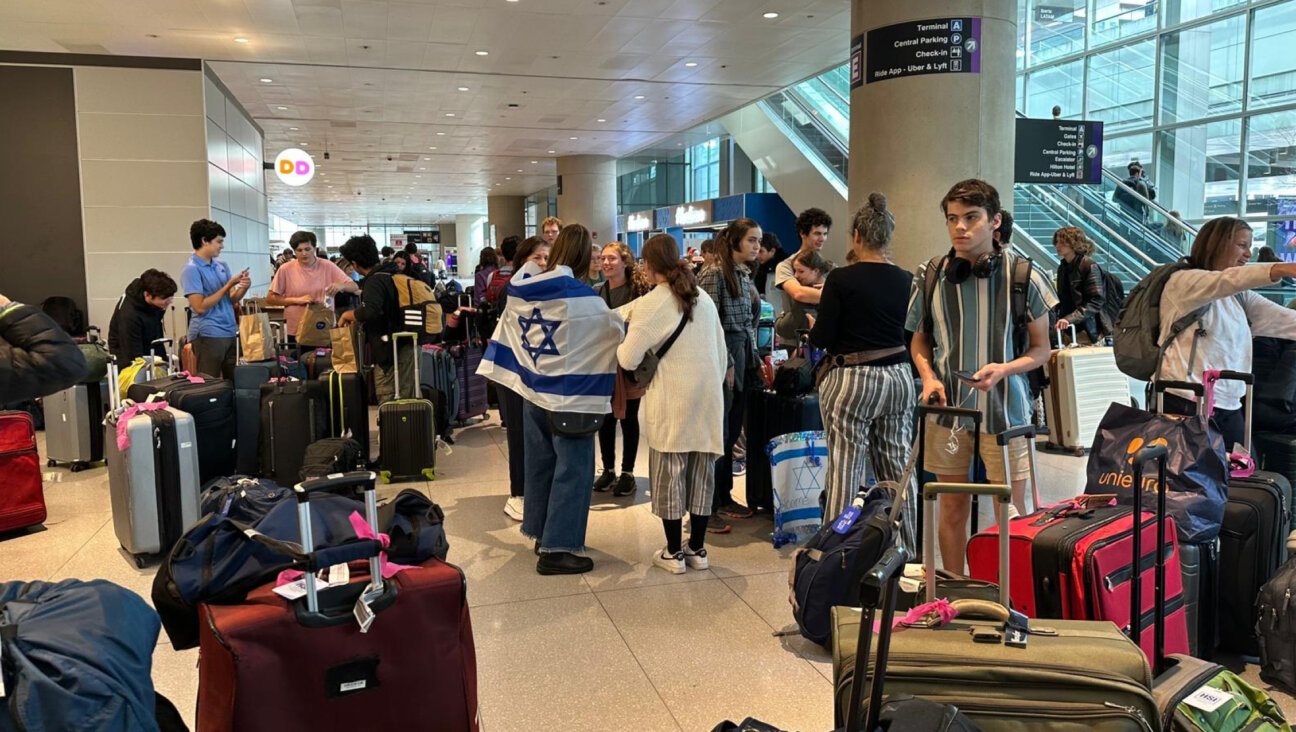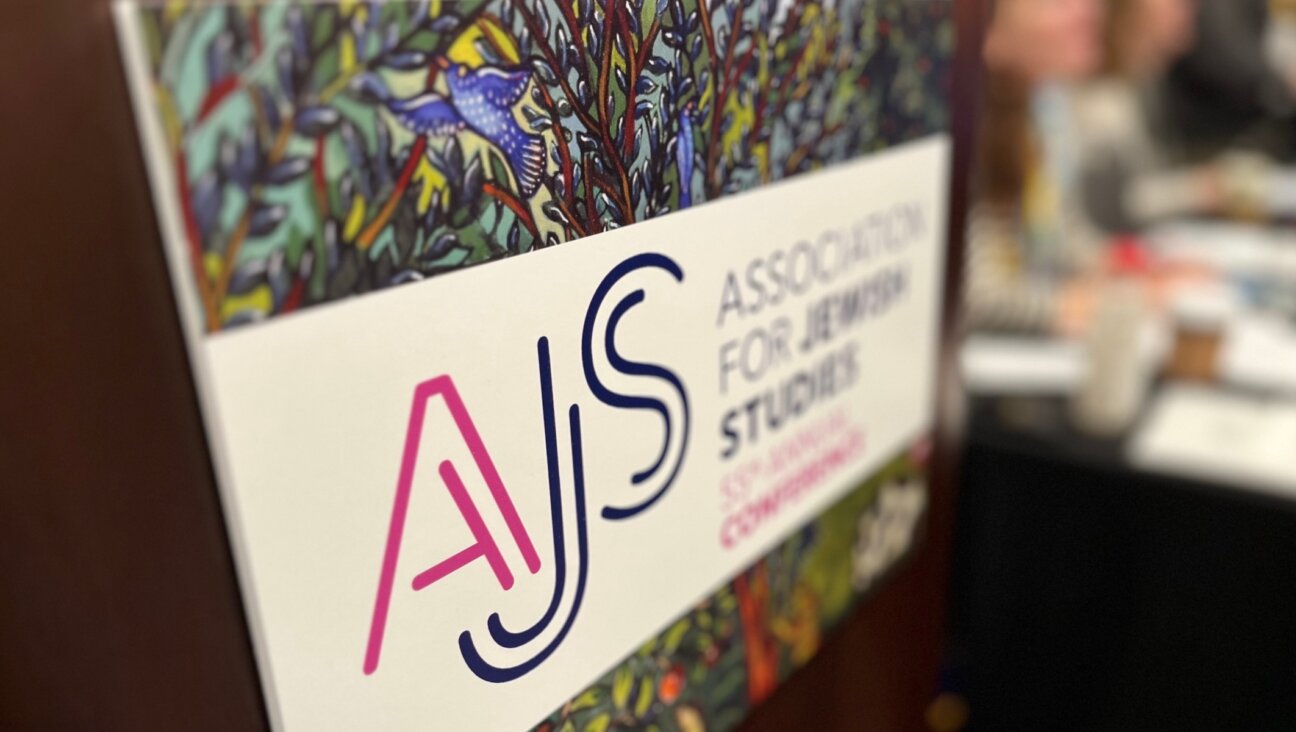Quebec Sephardim Make Breakthroughs
MONTREAL — The Sephardic population of Quebec is beginning to make major inroads in the Jewish communal power structure, after insisting for decades that they were treated as “poor relations” by the dominant English-speaking Ashkenazim in the province.
The French-speaking Sephardim, who emigrated from North Africa and the Middle East in the 1960s, account for a quarter of Montreal’s 100,000 Jews. They have come to occupy a unique niche as a minority within both the French-speaking, mostly Catholic population of Quebec and the province’s English-speaking Jewish community.
But with the exodus of many younger English-speaking Jews from Montreal during the past three decades and the successful integration of the Sephardim into Quebec society, the scene was set for Sephardic Jews to assume positions of leadership within the broader Jewish community and beyond.
In December, Jacques Saada, a Tunisian-born translator, became the first Sephardic Jew to serve in Canada’s federal cabinet when he was appointed Government House Leader. This follows a series of other Sephardic “firsts”: Joseph Gabay became president of the Quebec region of the Canadian Jewish Congress; Sylvain Abitbol assumed the presidency of Federation CJA, the funding body for 22 local Jewish agencies in Montreal, and Henri Elbaz was named executive director of Montreal’s Jewish General Hospital.
It was enough to make former Quebec premier Bernard Landry quip during a recent breakfast with Sephardic heavyweights: “The way things are going, I fear that within a few years the only position available for the Ashkenazim will be the presidency of the Sephardic community.”
“This is, first of all, a personal achievement,” Abitbol told the Forward, “but it’s also a breakthrough, a symbol of what we’re trying to achieve: building one community with different flavors. Every time someone from the Sephardic community reaches such a level, that person becomes a role model, making it easier for others to follow.”
Like most of Montreal’s Sephardim, Abitbol is of Moroccan origin, having emigrated following the Six-Day War in 1967. Preoccupied with adapting to their new society, the Sephardim did not become very involved in the wider Jewish community. They used their limited philanthropic resources to establish their own synagogues and schools, rather than donating to the Combined Jewish Appeal, the fundraising arm of Federation CJA. They also created the Communauté Sepharade du Quebec as an umbrella
organization separate from the Ashkenazi-dominated federation. “Moroccan Jews had a long tradition of establishing their own institutions [in the Diaspora],” said Yolande Cohen, a historian at the Université du Québec à Montréal, “but the Ashkenazim looked at this whole process as divisive for the Jewish community. There was lots of friction.”
The Sephardim, meanwhile, perceived the Ashkenazim as contemptuous of North African culture and unwilling to share power. “The Anglophone Jews didn’t think that the Francophone Jews were capable of leading the community,” said Jean-Claude Lasry, a psychology professor at Université de Montréal and a research clinician at Jewish General Hospital.
Lasry recalls how, in the early 1980s, he resigned as treasurer of the Federation CJA when passed over for a vice-presidency. Instead of following the usual line of succession, he said, the selection committee looked outside the organization. “On the personal level, you can have great friendships with [Ashkenazim] who are open-minded,” he said, “but at the community level, it’s a battle that hasn’t yet found its resolution through harmony.”
To the extent that they have gained more clout, Sephardic leaders cite two likely contributing factors. First, the increasing strength of Quebec’s secessionist movement after 1976 made it politically advantageous for the Jewish community to present a more French-speaking face to the surrounding society. “At first, the Sephardim were used as fronts,” Cohen said, “but gradually both groups saw they could gain from getting their act together.”
The other key factor in the Sephardic ascension appears to be the departure of many young English-speaking Jews seeking greener economic pastures and more political stability. This exodus left the Sephardim with a much more significant role to play in the perpetuation of the community.
Sephardim now account for a third of Montreal Jews between the ages of 15 and 24, said Jack Jedwab, former executive director of the Quebec region of the Canadian Jewish Congress. “The community realizes that it can’t ignore those numbers.”
Just what impact the rising Sephardic influence will have on community decisions is unclear. Most Sephardim are right-wing supporters of Israel, but the community as a whole has already rallied behind the hawkish policies of Israeli Prime Minister Sharon during the intifada. The community is united, too, in opposing any possibility of Quebec’s secession from Canada. But the Sephardim are more Orthodox and observant than the Ashkenazim, so community institutions may become more attentive to religious needs, such as kosher food, Jedwab said.
In a dramatic sign of a rapprochement between the two ethnic Jewish communities, the Sephardic umbrella organization now shares the Federation CJA’s office building. Even more significant: The Sephardim have increased their contributions to the community-wide CJA fundraising campaign.
“There’s been tremendous progress in the past three or four years,” Abitbol said. “Sephardic donations rose 30% last year. If you exclude the big donors from both communities, the Sephardim still rank below where they should be, though not far from the average.”
















